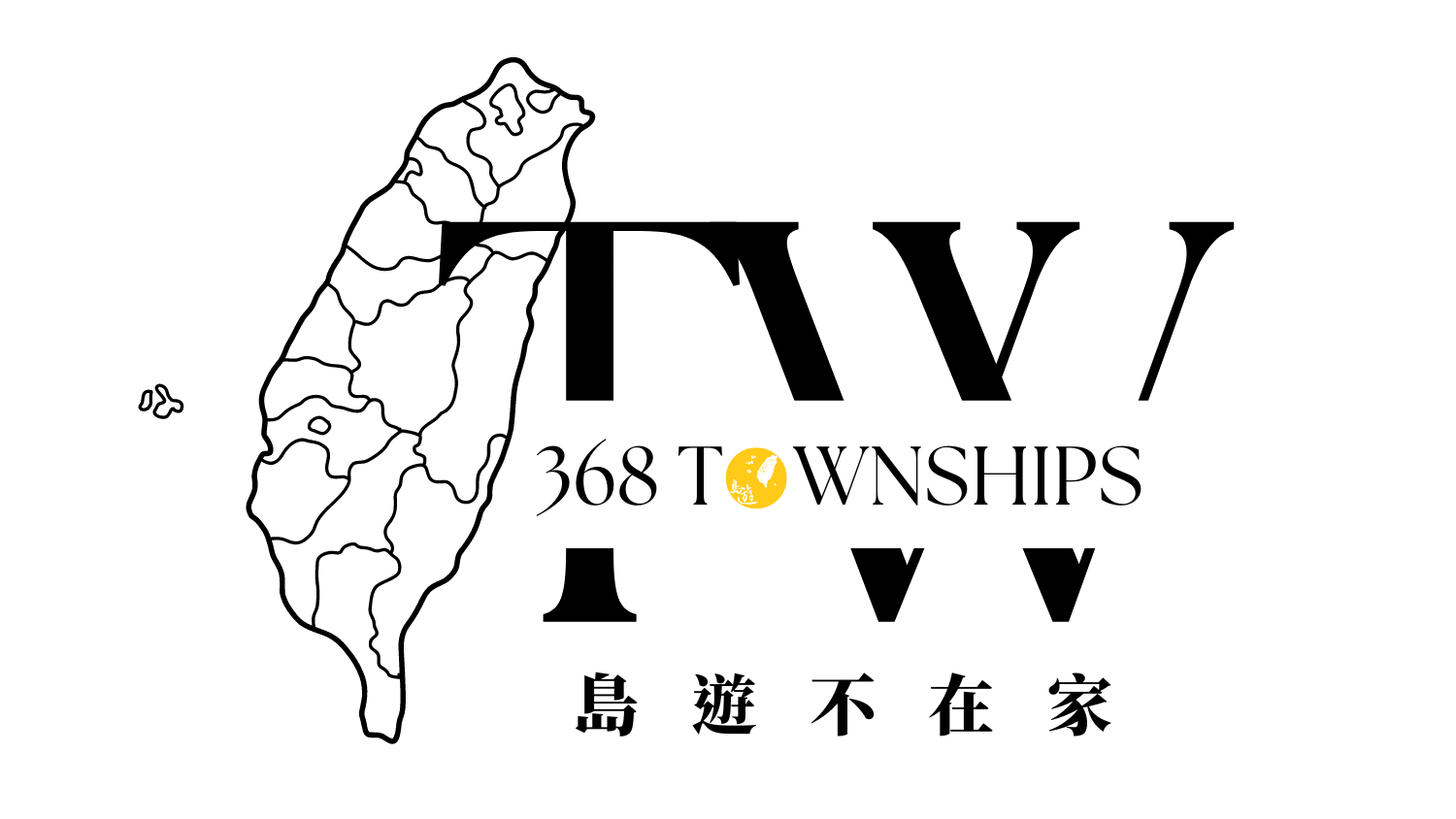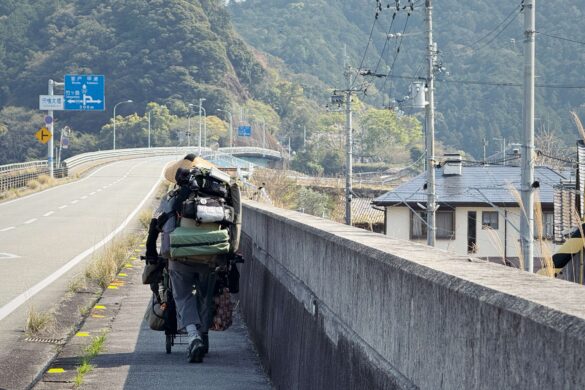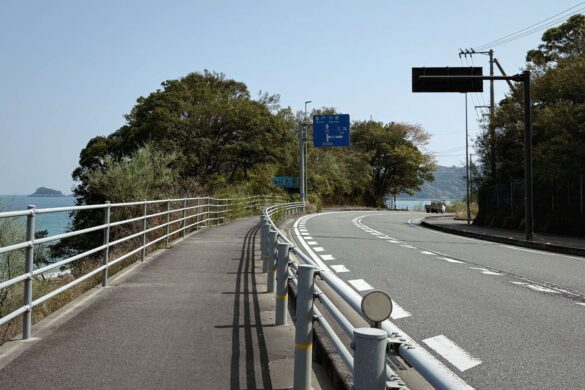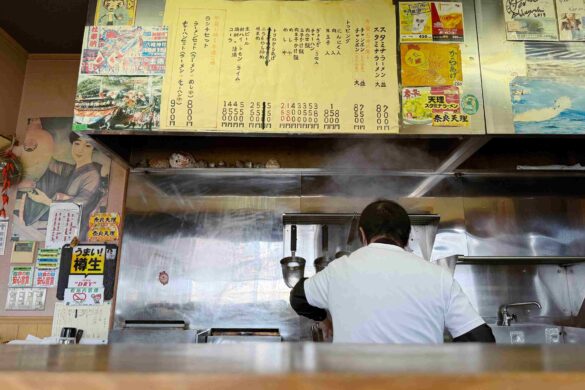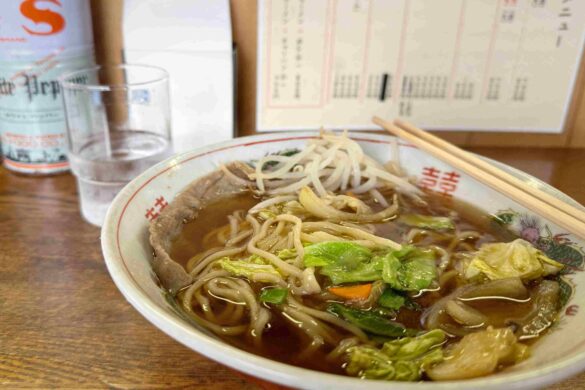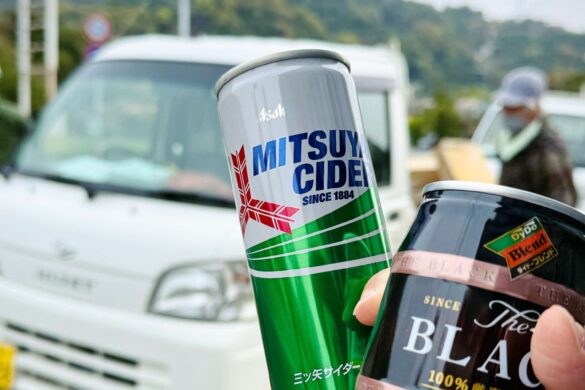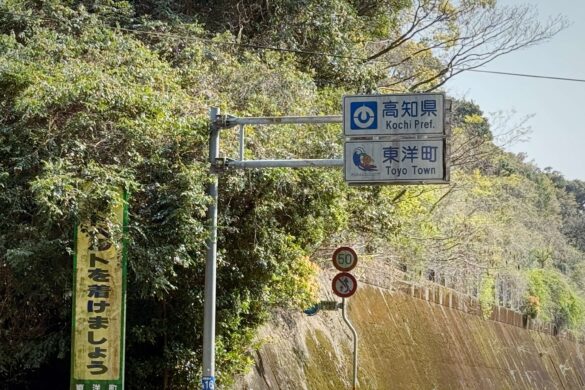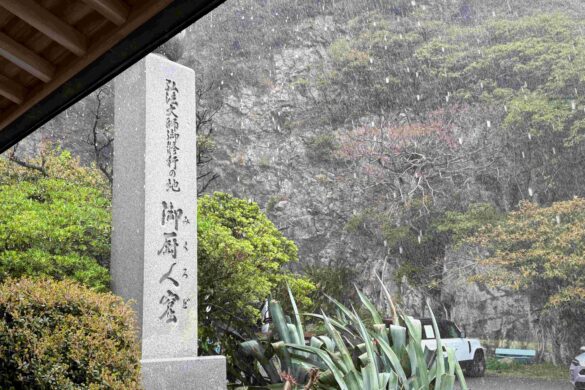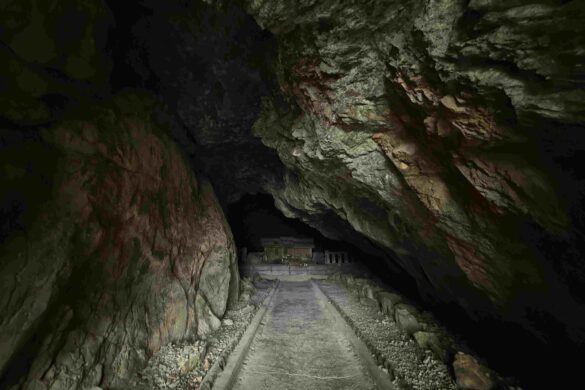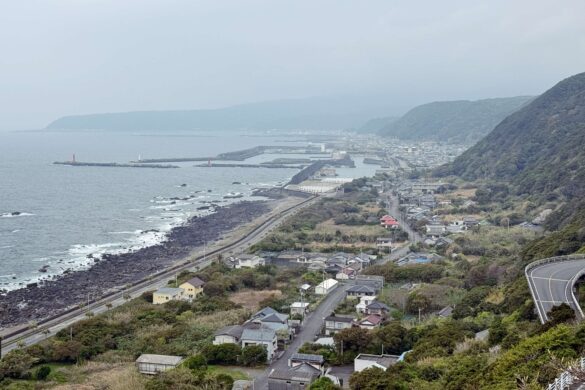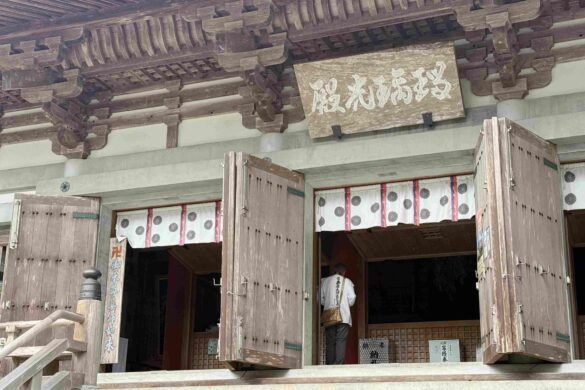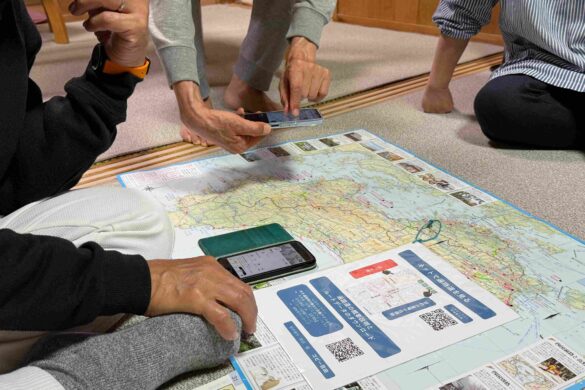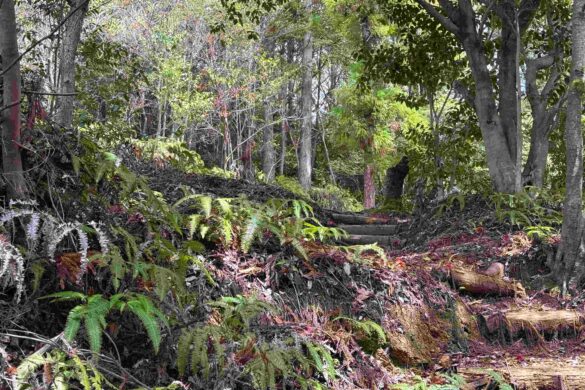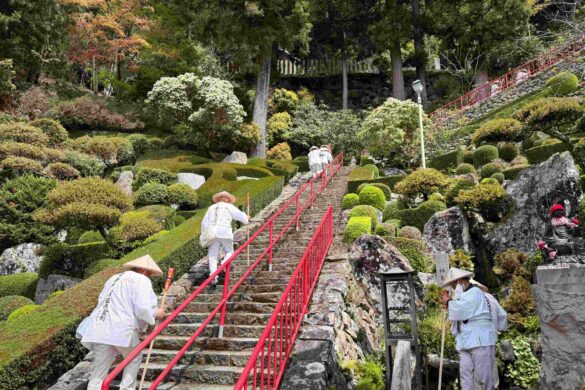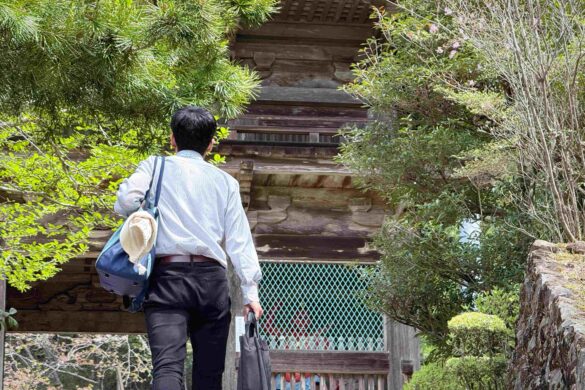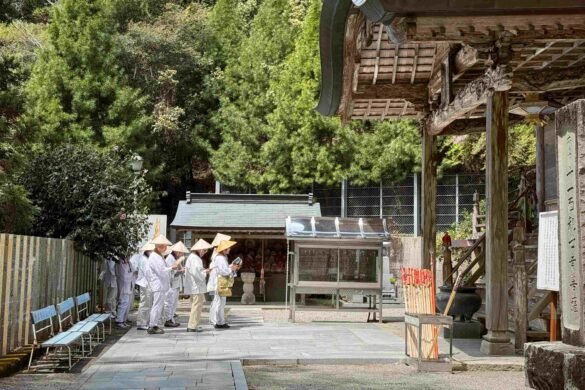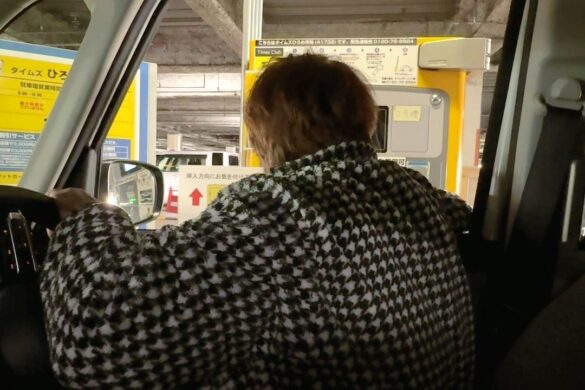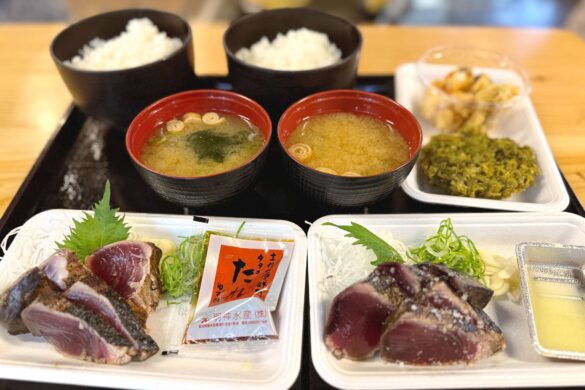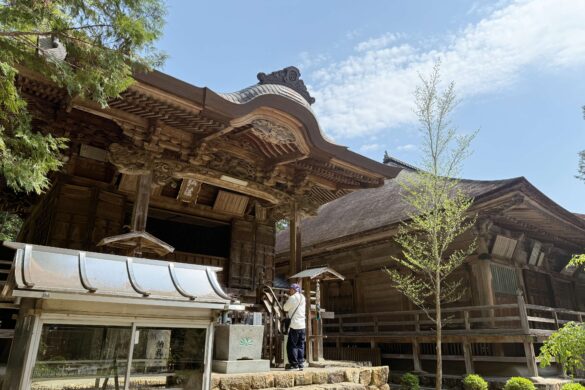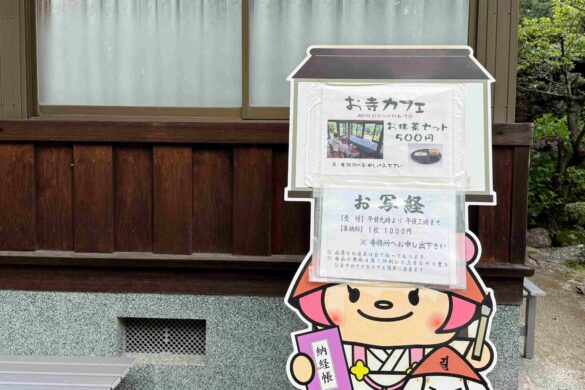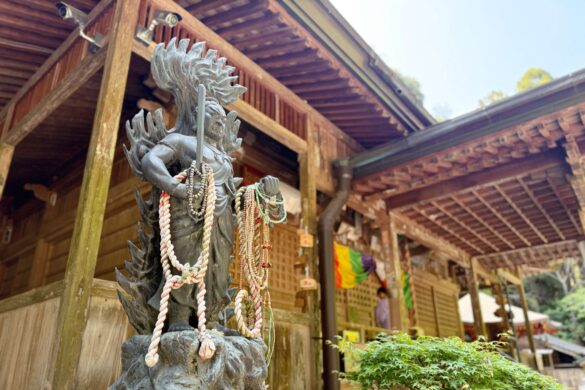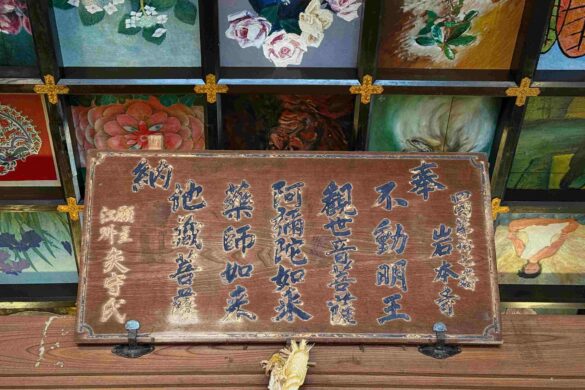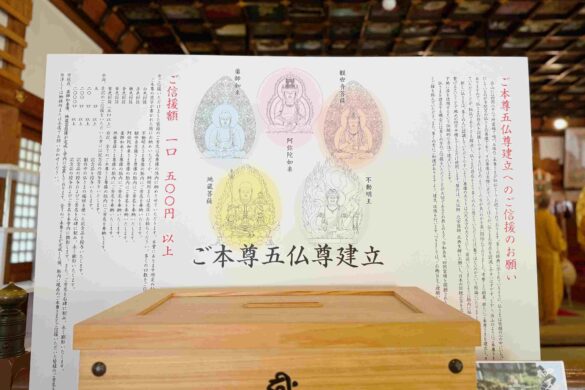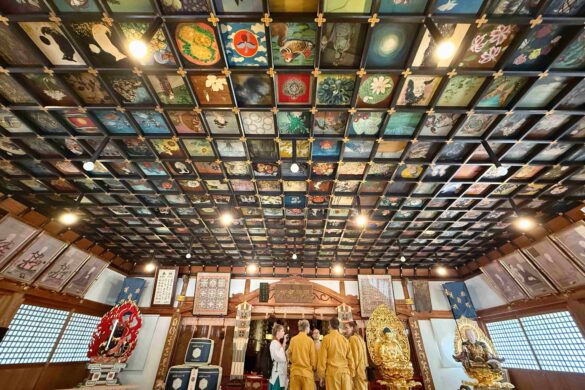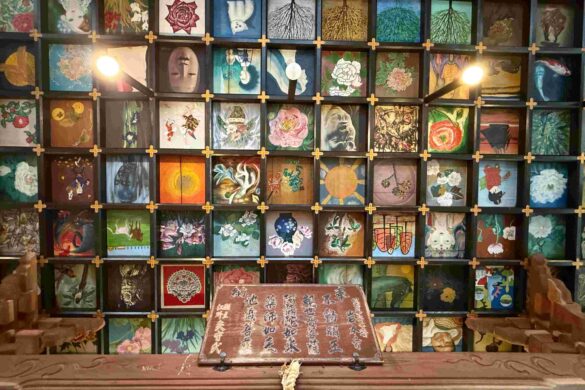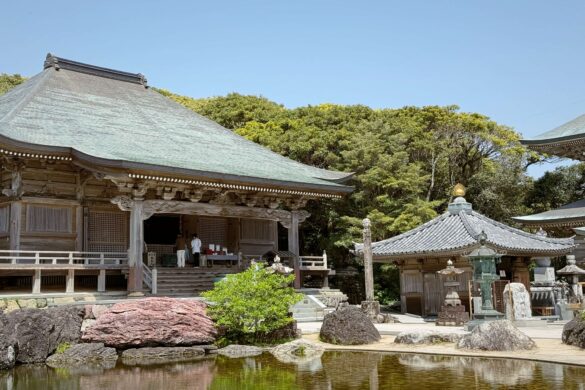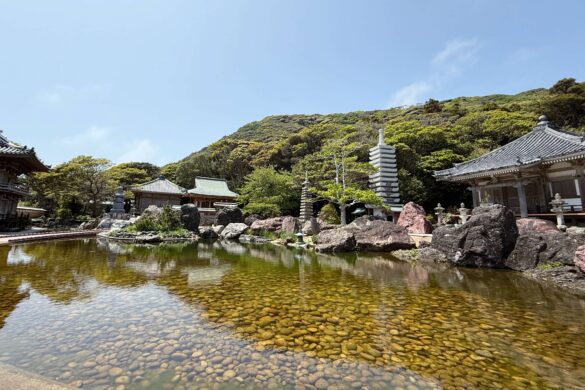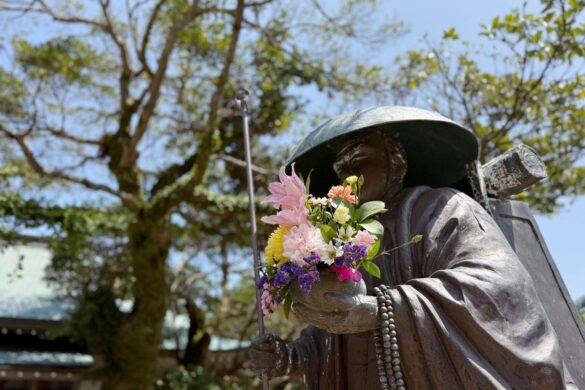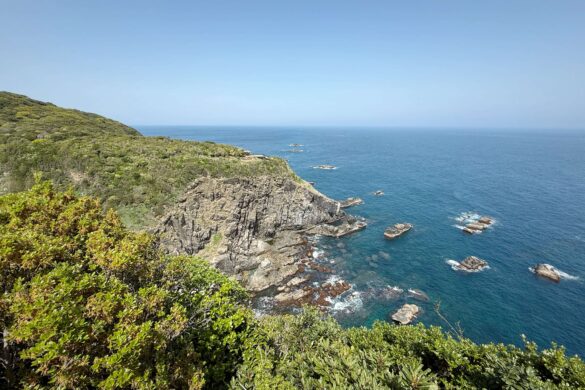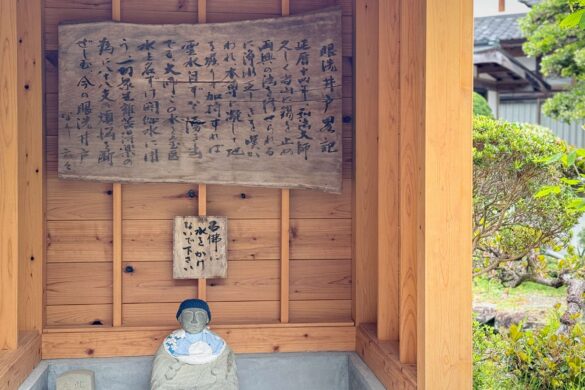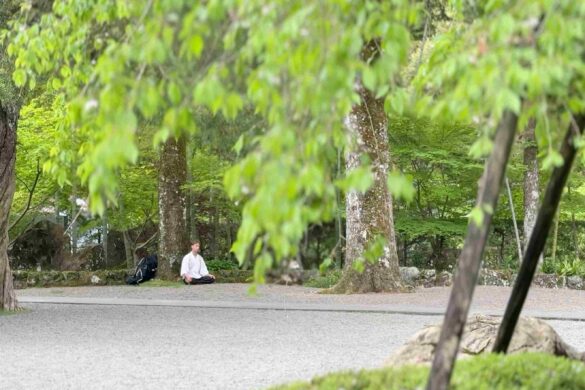Compared to Tokushima, known as the “Dojo of Awakening,” it's no surprise that Kōchi is called the “Dojo of Ascetic Training.” In my experience, Kōchi truly tested my willpower more than any other region. Between Temple No. 24 (Hotsumisakiji) and Temple No. 39 (Enkōji), there are only 16 temples in Kōchi—making it the region with the fewest temples among the four pilgrimage provinces. The distances between them are long and demanding. Most of the route follows a flat coastline. Watching buses roll past, it's hard not to notice when there's a fellow pilgrim onboard. Each time I saw one, my imagination ran wild with envy and temptation.
I admit it—any mode of wheeled transportation holds a dangerously strong allure!
Contents
。Day 9: Entering the Dojo of Ascetic Training
Temples visited: 0
🚶🏻♀️: 26 km
After two days of traveling by rental car, my body had mostly recovered from soreness. Feeling refreshed and energized, I walked from Tokushima into Kōchi, entering what’s reputed to be the most grueling part of the pilgrimage. What makes this stretch so difficult is the psychological strain. With the next temple over 60 kilometers away, going from visiting temples daily to walking for two or three days without seeing a single one brings a heavy emotional contrast. By afternoon, I had only seen two other pilgrims on the road. I couldn’t help but wonder, “Is this section so inefficient that most people just take the bus?”
As that thought crossed my mind, I spotted a pilgrim ahead, hunched under the weight of multiple bags, pushing along all his belongings. From the looks of it, he was one of those hardcore pilgrims—handling his own meals and camping outdoors each night. Watching his back fade into the distance, I imagined how much effort it must take not only to walk all day, but to also set up camp and cook for himself afterward. I felt a deep respect—and in that moment, my own "inefficiency" didn’t seem like such a big deal anymore.
。Day 10: “Osettai” — A Unique Cultural Feature of the Shikoku Pilgrimage
Temples visited: 0
🚶🏻♀️: 25 km
From Ikumi to Shiina, the communities were even more sparse than the day before. When I saw a ramen shop along the way, I stepped in without hesitation. It was a charming, old-school place — the kind with a few regulars sitting at the counter and the owner cooking in the open kitchen. The shop served only one type of ramen, with a range of optional toppings and side carbs. I ordered the simplest bowl. A moment later, the owner looked at me as he picked up some slices of meat and asked, “Ok?” “Ok!” I replied — perhaps he thought I was vegetarian and wanted to be sure. When he finished cooking three bowls, he served the others first. I noticed theirs only had vegetables, while mine was the only one with meat. And when it was time to pay, he only charged me for the basic ramen — no extra for the meat. That’s when I realized: this was his osettai — a quiet gesture of hospitality.
I kept walking for another two hours and eventually sat down at a small rest area. A construction truck pulled up nearby, and two workers began working on the roadside. One of them greeted me warmly in Japanese. I quickly explained that I was from Taiwan and didn’t speak the language. Smiling, he handed me a canned coffee and a fizzy drink, gesturing for me to drink and enjoy. Before leaving, he gave me a thumbs-up and wished me well. Maybe this stretch of the road existed just so I could meet people like them.
“Osettai” is a Shikoku tradition where locals voluntarily offer help and hospitality to pilgrims. The forms it takes are diverse — bottled drinks, fruit, bento meals, words of encouragement, or even shelters and benches to rest. These selfless acts are seen as expressions of kindness, rooted in deep respect and reverence for Kōbō Daishi, the founder of the pilgrimage.
。Day 11: Finally Reaching the First Temple of the Dojo of Ascetic Training!
Temples visited: Hotsumisakiji (No. 24)
🚶🏻♀️: 15.3 km
After walking for two and a half days, I finally arrived at Temple No. 24! Along the way, I passed a sea cave where Kūkai once trained. On the right is the Shinmeikutsu, the sacred cave used for spiritual practice; on the left is the Mikurodo, where he handled daily life such as eating and resting.
For the 19-year-old Kūkai, Muroto Cape and Murotozan Myōjōin Hotsumisakiji held deep significance. One day, while he was earnestly practicing the Gumonjihō mantra of Ākāśagarbha Bodhisattva inside the cave, he suddenly heard a sound within. Then, a brilliant star descended, and the radiance of the Bodhisattva illuminated the cavern. Years later, after returning from his studies in Tang China, Kūkai came back to Muroto Cape, carved a statue of Ākāśagarbha, and established Hotsumisakiji Temple. The “bright star” that appeared that day became the inspiration for the temple’s name — Myōjōin, meaning “Temple of the Morning Star.”
。Day 12: What Do Pilgrims Do at Night?
Temples visited: Shinshō-ji (No. 25) to Kongōchōji (No. 26)
🚶🏻♀️: 23.8 km
Today at Temple No. 26, Kongōchōji, I ran into a fellow pilgrim I had walked with on the very first day — I was overjoyed! In the vast “sea of temples,” such reunions are rare and precious for pilgrims. Even more coincidentally, we happened to be staying at the same guesthouse tonight. After dinner, he pulled out a Shikoku pilgrimage map and started diligently reviewing the route ahead. As we chatted, another man joined in — someone who had completed the full pilgrimage 25 times! The conversation quickly became lively and full of shared enthusiasm. Evenings for pilgrims are simple and grounded. After a good meal, they typically check the weather for the next day, plan upcoming accommodations, or reflect on the people and moments they’ve encountered along the way.
。Day 13: The Secret to Mitsubishi’s Success
Temples visited: Kōnomineji (No. 27)
🚶🏻♀️: 22.2 km
Officially, there are five “nansho” — difficult temples — on the Shikoku Pilgrimage, but many pilgrimage guides often include Kōnomineji, sitting at an elevation of around 400 meters, as an unofficial sixth due to its steep climb. This temple holds a special place in the business world. In the late 19th century, when Iwasaki Yatarō founded Mitsubishi, his mother walked 20 kilometers round-trip each day for 21 days to pray sincerely at Kōnomineji for the success of her son’s new venture.
Unlike many other temples, Kōnomineji often draws a noticeable number of visitors dressed in business attire. With its strong spiritual ties to both Kūkai and the founding legend of Mitsubishi, the temple enjoys a steady stream of worshippers and vibrant devotion.
。Day 14: The Generosity of Kōchi Locals Truly Surprised Me
Temple visited: Dainichiji (No. 28)
🚆: 32 km
🚶🏻♀️: 4.5 km
Japanese weather forecasts are impressively accurate — it rained heavily all day today. I decided to take the train to the next temple instead of walking. After all, adapting to change and staying flexible is its own form of spiritual practice. Since I arrived at the guesthouse earlier than expected after my temple visit, I went in to ask if I could drop off my luggage.
“Did you already visit the temple? Are you planning to go anywhere else afterward?”
“Yes, I’ve finished the temple visit. I was hoping to leave my luggage and grab something to eat nearby.”
“I need to deliver another guest’s luggage to the city — want to come with me?”
“Sure!”
Thanks to the wonders of modern translation apps, we communicated with ease — even chatting about travel and politics during the car ride. When she learned I hadn’t planned any sightseeing, she brought me straight to the famous Hirome Market in Kōchi, and took me to the popular restaurant Myōjinmaru. As I pulled out my wallet to pay for the charcoal-seared bonito set meal — assuming we’d each pay our own — she flat-out refused and insisted on treating me. She even covered parking. I happened to catch a glimpse of the bill… and it was about a third of the guesthouse rate. The next morning, she prepared breakfast for me and personally delivered my luggage to my next accommodation.
I’ve never met a guesthouse host so generous — it was truly a first in my life. The warmth and kindness of the people in Shikoku, especially in Kōchi, left an unforgettable impression.
。Day 15: Why Are There So Many “Kokubunji”?
Temples visited: Tosa Kokubunji (No. 29) to Zenrakuji (No. 30)
🚶🏻♀️: 20.3 km
If there’s one thing all four pilgrimage “dōjō” regions have in common, it’s this: they each include a Kokubunji temple. And not just in Shikoku — you can find Kokubunji temples all over Japan. The origin traces back to the 8th century, during the reign of Emperor Shōmu, a devout Buddhist. To pray for the peace and protection of the nation, he ordered the establishment of provincial temples (Kokubunji for monks, Kokubunniji for nuns) in all 68 provinces across Japan. The head temples of this system were Tōdaiji and Hokkeji in Nara.
However, not every Kokubunji maintained its former grandeur. For instance, Awa Kokubunji (Temple No. 15), though once blessed by imperial decree, is now modest and small — you can walk through it in about 10 minutes, due to destruction from past wars and modest rebuilding. In contrast, the Tosa Kokubunji I visited today (No. 29) is much larger and even offers sutra copying and matcha tea experiences.
。Day 16: How to Book a Room by Phone Without Speaking Japanese?
Temples visited: Chikurinji (No. 31) to Sekkeiji (No. 33)
🚶🏻♀️: 18.6 km
🛥️: 700 m
Today, I bumped into an American pilgrim I’d previously had a great conversation with on the road. Like me, she doesn’t speak Japanese, and she shared how challenging it can be to book accommodations — especially in rural Shikoku, where most guesthouses only accept reservations by phone. I shared with her a method that works surprisingly well, even without knowing Japanese: use technology to your advantage!
First, use a reliable calling app. Since Skype has discontinued some of its services, I recommend trying Viber, a Japanese Rakuten Group app that supports international calls. I’ve used it from Taiwan to Japan — the audio was clear and the delay was minimal.
Second, prepare your script in Japanese. Use ChatGPT to translate a simple booking script with your name, country, date of stay, type of stay (room only or with meals), and ask about the price. Then, paste each line into Google Translate, and play the audio for the person on the other end.
Finally, listen for: 「大丈夫です」 (Daijōbu desu). If you hear that, you're good! It means “It’s okay” or “No problem.” Japanese hosts are very trustworthy — I used this method to book over 10 accommodations, and every single one honored the reservation without issue.
。Day 17: Break in Your Shoes Before You Go!
Temples visited: Tanemaji (No. 34) to Seiryūji (No. 36)
🚶🏻♀️: 28.3 km
Today’s walk was one of the longer ones, with plenty of uphill and downhill sections, so I set out as soon as daylight broke at 6 a.m. After descending from Temple No. 35, Seiryūji, I noticed something surprising — my steps felt lighter, like I was finally becoming one with my shoes. In the first days of walking with a full pack for 3–4 hours, I’d always feel pain in my left heel from excessive friction, and a stiff right ankle that required me to twist and tiptoe at red lights just to feel some relief. But today, I walked almost 7 hours before the discomfort began.
“I’m wearing Salomons — the ones seasoned pilgrims swear by! So what went wrong?” Of course, it wasn’t the shoes — it was me. My friend warned me before the trip: “You have to break in your shoes first.” I thought I’d done enough by walking 5 km to the library and back. They felt fine, so I figured I was good to go. But once I started walking 10–20 km daily with a loaded backpack, it hit me hard. The first week was painful, and by the end of it, my right foot had swollen up badly. Now, on Day 17, I finally feel that comforting sense of “man and shoe, united at last.” So to anyone preparing for a pilgrimage: Break in your shoes — seriously.
。Day 18: Fell in Love with “Katsuo no Warayaki Tataki” After Just One Bite
Temples visited: 0
🚇: 54 km
Today was a rest day — I took the train to Kubokawa to recharge. I wanted to do something fun, but in the end, all I craved was a good meal and a trip to the supermarket. My unexpectedly modest desires actually surprised me. Since I was still in Kochi, I treated myself to a dish I fell in love with after the first bite: seared bonito grilled over straw. The rich aroma of the burning straw and the fatty bonito melded into a deep, savory flavor. Add a sprinkle of sea salt, crispy garlic slices, and a splash of lemon juice — and you have a taste that’s simply divine.
This Kochi specialty has quite a name: “Katsuo no Warayaki Hanchōzuri”. It uses fattier cuts of bonito, seared quickly over a roaring straw flame. The technique removes any fishiness while sealing in the freshness and flavor. Now that my belly and heart are full, I feel ready to walk on with strength again tomorrow.
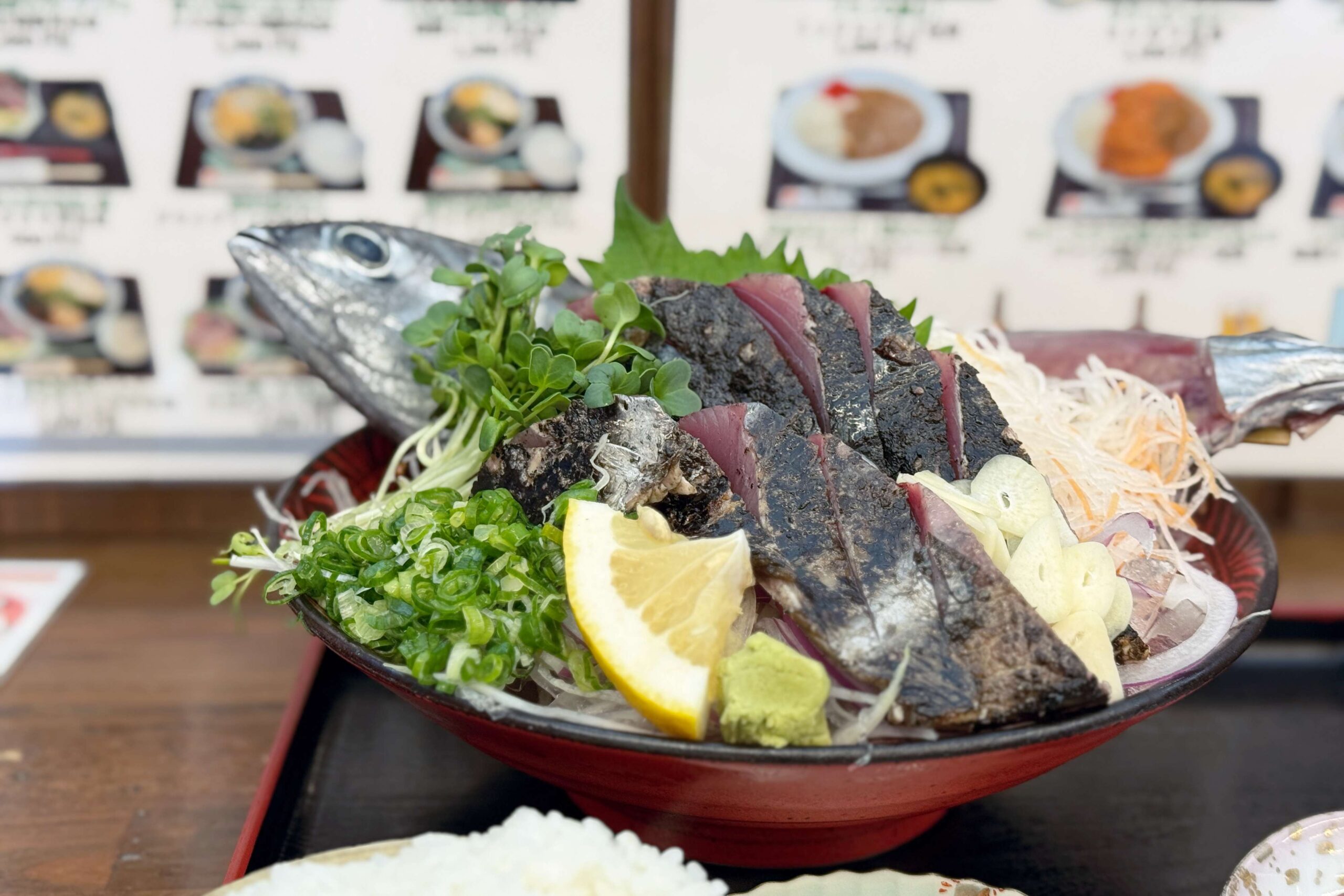
。Day 19: Go Go Power Rangers
Temples Visited: Iwamoto-ji (No. 37)
🚶🏾♀️➡️: 28.6 km
Iwamoto-ji stands out from other sacred sites on the pilgrimage — while most temples enshrine a single principal deity, this one has five: Fudō Myō-ō (Acala), Kannon (Avalokiteśvara), Amida Nyorai (Amitābha), Yakushi Nyorai (Medicine Buddha), and Jizō Bosatsu (Kṣitigarbha). It’s basically the Power Rangers of pilgrimage temples!
During the Edo period (17th–19th centuries), this area was home to five separate shrines collectively known as the “Five Shrines of Niida.” However, when the Haibutsu Kishaku (anti-Buddhist movement) swept through Japan in the first year of the Meiji era, the deities from these shrines were relocated and enshrined together in what is now the main hall of Iwamoto-ji — forming its current lineup of five principal deities.
Inside the main hall is something that completely took my breath away: the “Coffered Ceiling Paintings of the Inner Sanctuary” (天井画). When the temple was renovated in 1978, a nationwide call was made for art submissions to decorate the ceiling. The result? A stunning collection of 575 individual panels depicting everything from seasonal flowers and birds to mandalas of human life — it’s absolutely awe-inspiring!
。Day 20: A Tempting Dojo of Discipline
Temples Visited: 0
🚶🏾♀️: 34 km
Today marks a new milestone in my life—I've officially crossed the 30-kilometer mark on foot, spending a total of nine hours walking. Just two more temples to go before finishing the pilgrimage segment in Kochi. It’s no wonder this area is nicknamed the "Dojo of Discipline"—not because it's grueling like the mountainous terrain in Tokushima, but because it’s full of tempting shortcuts. Unlike Tokushima, Kochi’s routes often run alongside the coast, with frequent bus and train services. That convenience is exactly what makes it so tempting.
The problem is, many of the temples here are incredibly far apart. The three most iconic stretches are:
1.Temple 23 (Yakuō-ji) to Temple 24 (Hotsumisaki-ji): 77 km. I started from a hotel in Tokushima and walked 60 km of it.
2. Temple 36 (Shōryū-ji) to Temple 37 (Iwamoto-ji): 54 km. I took the train for this part.
3. Temple 37 (Iwamoto-ji) to Temple 38 (Kongōfuku-ji): 84 km. It took me three days on foot.
As I walked along the highway, buses and trains would pass by every so often. If I happened to spot another pilgrim inside one of them, my mind would spiral into an inner monologue:
“He got there in just over an hour. Why am I spending nine hours walking?”
“Why are you walking, anyway? You’re not here to practice asceticism or pray for some divine favor. Taking the bus is totally fine!”
“You really want to take the bus, don’t you?”
“Of course I do! I really want to get on that bus—but I don’t know why I never actually stop at the bus stops!”
After a full day of this mental tug-of-war, I finally reached my destination. I told myself I’d just take the bus tomorrow—but when the time came, I ended up walking again.
I’ve thought about it a lot, and I still don’t have a clear answer. But deep down, I feel there’s something incredibly luxurious about stepping away from the rhythm of daily life to do something as inefficient as “walking” or “getting lost.”
。Day 21: The Southernmost Point of Shikoku
Temples Visited: Kongōfuku-ji (No. 38)
🚶🏾♀️: 22.6 km
🚌: 20 km
After three full days of walking, I finally arrived at the southernmost tip of Shikoku—Kongōfuku-ji, perched above Cape Ashizuri. Just standing at the cape and taking in the vast expanse of the Pacific Ocean made the entire journey worthwhile. The moment I stepped into the temple grounds, I heard a Japanese woman beside me exclaim, “Sugoi~ sugoi!”—“Amazing!” And I completely understood her spontaneous reaction. Among all the temples I’ve visited so far, Kongōfuku-ji boasts the most refined and majestic garden landscape.
Over 1,200 years ago, the monk Kūkai stood on this very cape and sensed that this place was the closest to Kannon Bodhisattva’s Pure Land—Potalaka. He reported this revelation to Emperor Saga, who then ordered a temple to be built here and bestowed it with the imperial title “Potalaka Eastern Gate.” Today, as you approach the Niōmon gate, you can still see those five characters—evidence of the deep respect and trust the emperor had for Kūkai.
。Day 22: The Pilgrim's "Business Card"
Temples Visited: 0
🚶🏾♀️: 31 km
Today, I want to share the unexpected joy of receiving my very first osamefuda—a pilgrim’s name slip. While having lunch at Temple 27, Kōnomine-ji, I greeted a kind couple nearby. Perhaps they could tell from my accent that I wasn't Japanese. Not long after they left, they actually doubled back to find me—bringing a bag of food and handing me an osamefuda, which is like a business card exchanged among pilgrims on the Shikoku trail. I didn’t have one of my own to give in return, but I was genuinely thrilled to receive it!
Osamefuda are religious name slips with three main purposes. First, pilgrims write their name, address, age, wishes, and the date of their pilgrimage on them, and place them in offering boxes at the temple’s Main Hall and Daishi Hall. It’s a way of letting the deity and Kūkai know that you’ve come. Second, they’re exchanged among pilgrims—a symbolic gesture of mutual blessing and camaraderie. Third, they're often given to locals as tokens of gratitude. You’ll often see them pinned up on guesthouse message boards as keepsakes from thankful visitors.
Receiving an osamefuda, along with such heartfelt kindness, was an incredible morale boost on this long and often solitary journey.
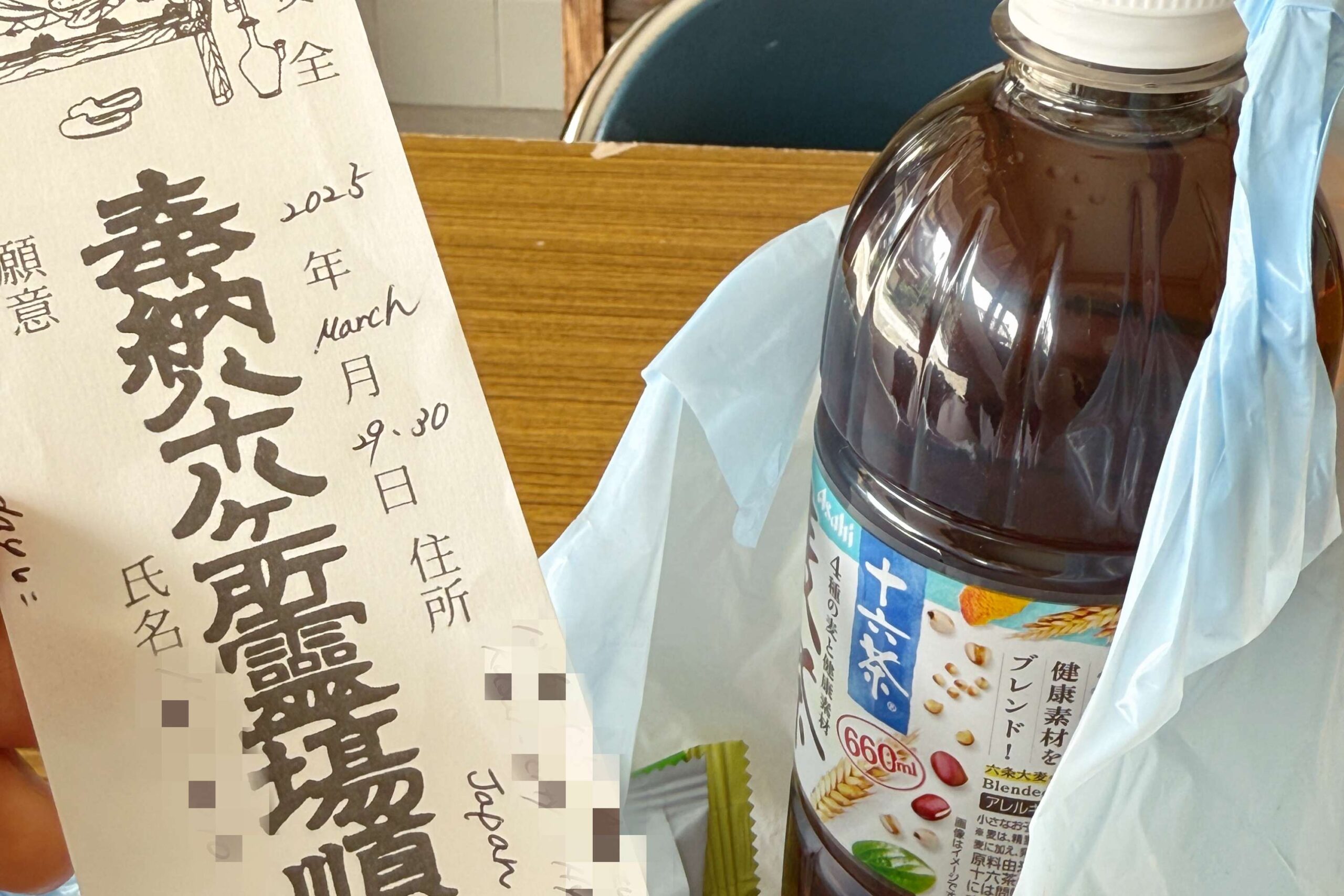
。Day 23: The Final Temple of the Dojo of Discipline
Temples Visited: Enkō-ji (No. 39)
🚶🏾♀️: 28 km
Today, the most moving sight was a fellow pilgrim sitting quietly beneath a large tree, practicing in silence. At the last temple of the dojo, he reminded me not to forget my original intention—that stillness and space can hold great power.
There are only 16 temples in Kōchi, making it the smallest of the four sacred pilgrimage regions. Yet, it felt like the longest stretch of the journey. Finally arriving at the last temple, I found myself thinking, “Wait, is it really over already?”—a surreal feeling that's hard to put into words.
This journey along the Shikoku Pilgrimage gave me the rare chance to spend long stretches of time alone with myself—bringing both reflection and inspiration. I sincerely hope more people can personally experience the depth and meaning of this sacred trail. If you're curious or planning to walk it yourself, I hope this article offers even a small bit of help. If you’re interested in the scenery along the route or what the temples look like, feel free to visit my YouTube channel. In the Shorts section, I’ve documented every temple—precious memories I’ll keep revisiting again and again.
